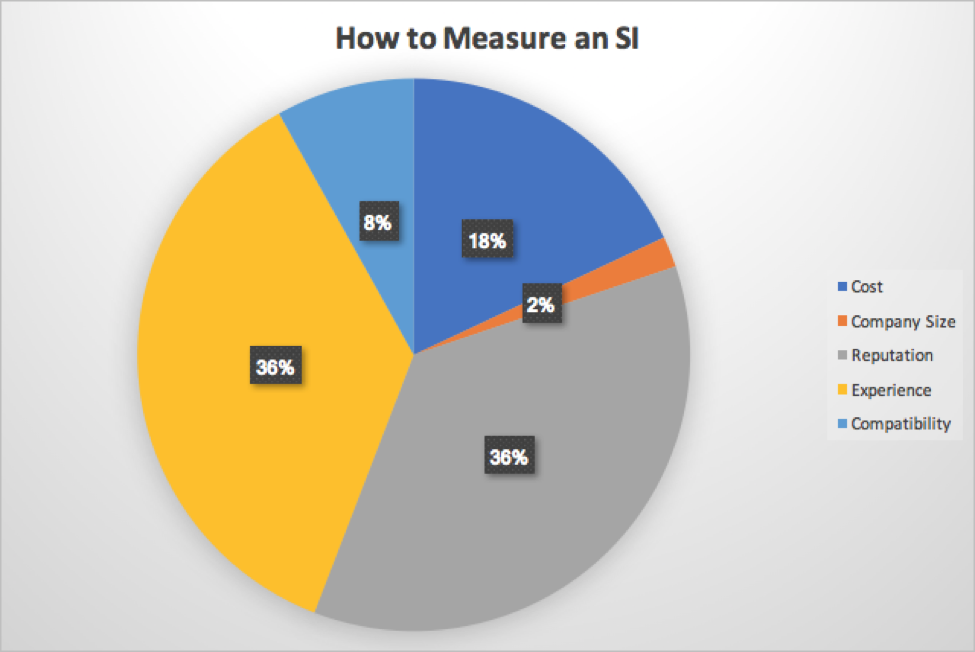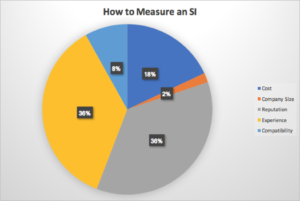
Picking the Right System Integrator (SI)
- Cost
- Company Size
- Reputation
- Resource Compatibility
- Experience
Certainly, all of these factors should be considered to some extent. The challenge lies in determining how much weight needs to be added to each of them.
I have an opinion on this, as I have seen a lot of customers choose the wrong SI which ultimately creates a solution that is unusable.
Cost
The cost will always be a factor in deciding an SI, but it should not be the only nor should it be the most important. There are two components to cost: 1) daily or hourly rate and 2) total cost of ownership. All you have to do is look at clients who have chosen the cheapest option and compare that to user adoption. What often happens when the SI with the cheapest rate is chosen is the project starts, it finishes, and then the users don’t use the system and another more expensive and/or experienced integrator has to come in and fix it or re-do it. You can learn from other’s mistakes; you get what you pay for.
Company Size
This isn’t used as much but can be important to some for financial stability reasons. Customers want to make sure a company won’t fold while their project is going. This is usually the case for larger projects. The irony of this is that if it is a big project, the company is getting paid, so for the resources on the project, they won’t be going anywhere.
The other reason customers look at company size may be to know they have enough resources to support the project. This is valid, depending on the size of the project.
Reputation
This should have a lot of weight. Find out about who you are considering. Don’t ask for references; find them through your own channels. I’ve always thought asking someone for a reference was odd, since the only reference you will get are the ones that they want you to talk to.
Resource Compatibility
This one is hard to articulate; you either have it or you don’t. Different organizations have different cultures, and sometimes those cultures don’t mesh. Make sure you find one that will. Ask the SI who will be on the project. SI’s can provide you with names and resumes, but understand that the bait and switch may happen depending on project timelines and start dates. That’s OK if you set the expectation up front that you have to approve the resources who will be on the project. Ask to interview the candidates that are being proposed and make sure it is clear that you have the right to ask for a resource to be replaced.
Experience
One of the biggest challenges faced by SI’s is knowing where the pitfalls are. The clients don’t know where they are, so the SI’s must. Knowing these pitfalls comes with experience. I’ve seen too many clients that use large, high priced SI’s who provide inexperienced teams which leads to a slow, over-architected solution that is essentially not useable – a lose-lose for everyone.
In the end, the best advice is to ask the right questions and do your homework. Find out about the companies you are considering and what they have done before engaging them. This is a “service” industry, which means customer service is important.
The following chart represents what I believe is important. There certainly are other factors to consider, and I would be interested in hearing any feedback on my recommendations:

